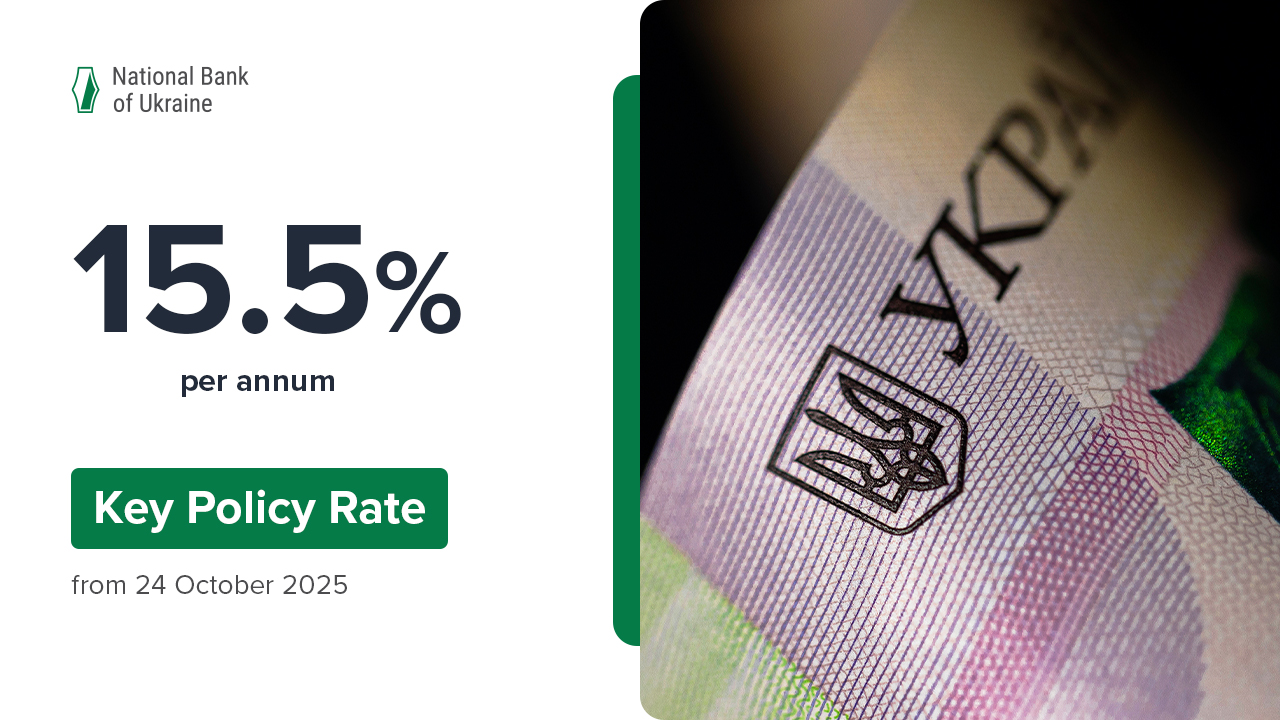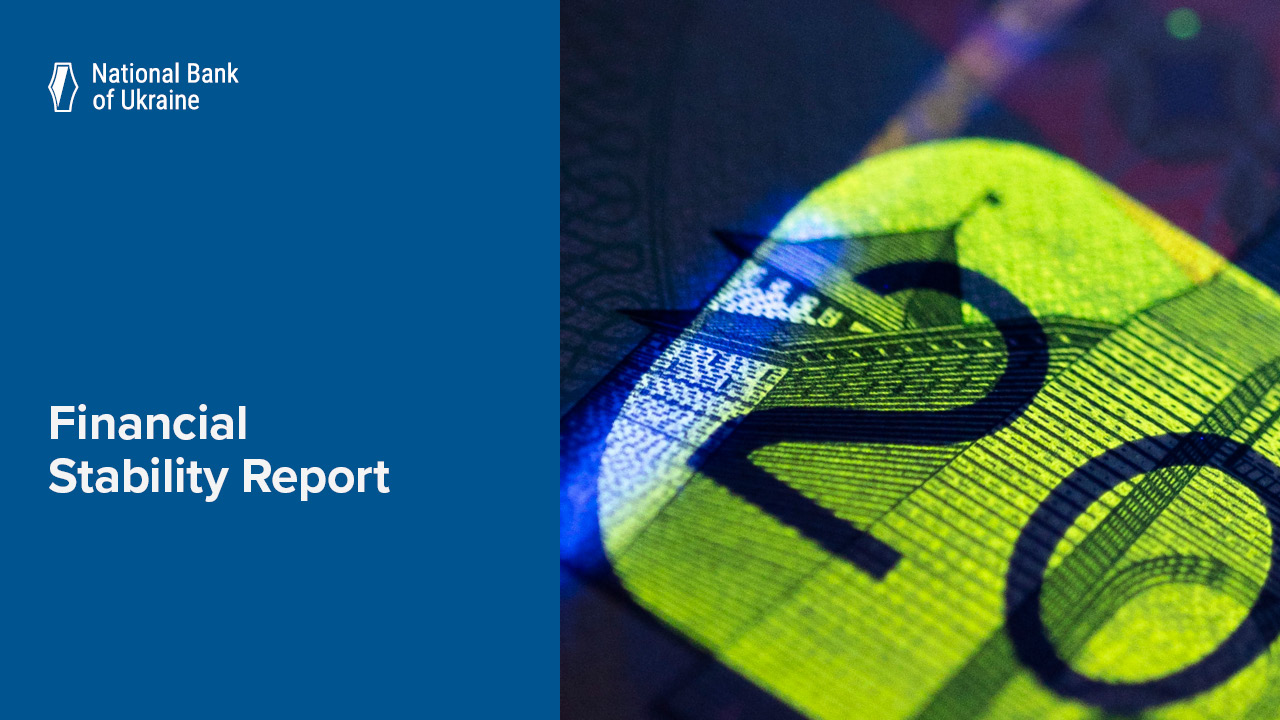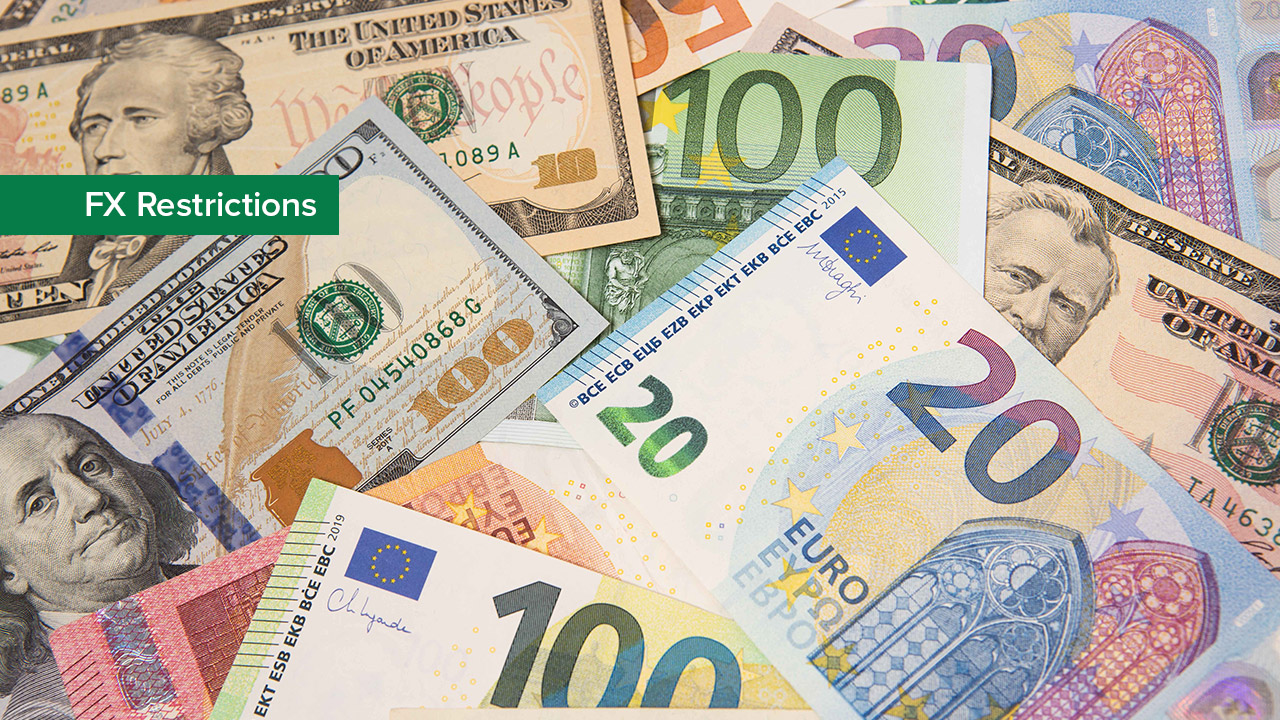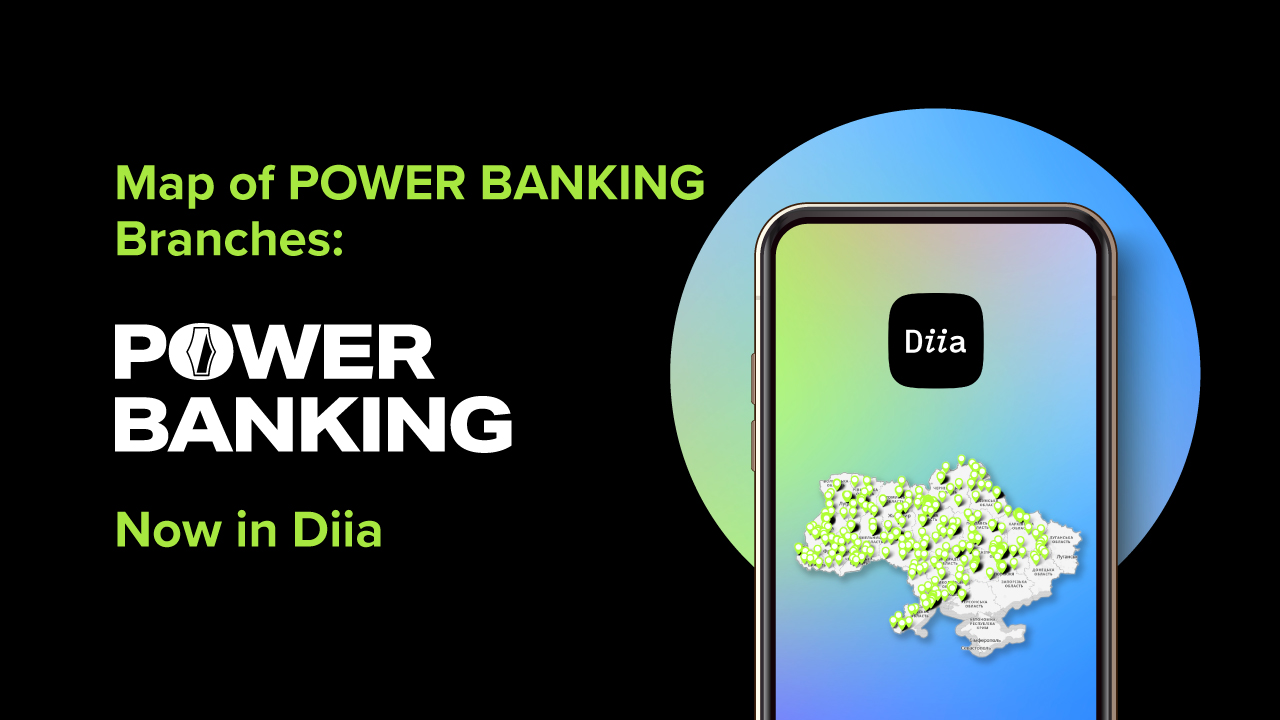Meeting date: 22 January 2025.
Attendees: all 11 members of the Monetary Policy Committee (MPC) of the National Bank of Ukraine:
- Andriy Pyshnyy, Governor of the National Bank of Ukraine
- Kateryna Rozhkova, First Deputy Governor
- Yuriy Heletiy, Deputy Governor
- Yaroslav Matuzka, Deputy Governor
- Sergiy Nikolaychuk, Deputy Governor
- Dmytro Oliinyk, Deputy Governor
- Oleksii Shaban, Deputy Governor
- Pervin Dadashova, Director, Financial Stability Department
- Volodymyr Lepushynskyi, Director, Monetary Policy and Economic Analysis Department
- Oleksandr Arseniuk, Acting Director, Open Market Operations Department
- Yuriy Polovniov, Director, Statistics and Reporting Department.
The MPC members discussed the main drivers and likely duration of the current price surge, as well as the parameters of interest rate policy and measures to maintain FX market sustainability that are necessary to keep expectations under control and return inflation to a sustainable downward-sloping trajectory that leads to the 5% target
The discussion participants said that price developments continued to outpace the forecasts of both the NBU (October 2024 Inflation Report) and other organizations and experts. Last year, consumer inflation reached 12% yoy and, by NBU estimates, continued to rise in January 2025.
On the one hand, these price developments were largely shaped by temporary factors that should eventually wear off. Those include the effects of poorer harvests amid adverse weather and a weakening of the hryvnia exchange rate in 2024.
On the other hand, there are numerous indications of mounting underlying price pressures. Specifically, with business costs rising (including those of energy independence and labor, pushed higher by a shortage of personnel) and consumer demand being fairly strong, core inflation continued to grow (to 10.7% yoy in December). In particular, services prices surged in December (12.5% yoy). Inflation has been spreading to an increasingly wide variety of goods and services (running at over 10% yoy for more than 45% of the consumer basket), drawing public attention. Evidence of this is provided, among other things, by the spike in inflation-themed queries on the web, according to Google Trends data. As a result, inflation expectations of businesses and households responded to the price surge by deteriorating significantly at the end of the year, after a long period of remaining sustainable. Although financial analysts and banks are still convinced that this inflationary pressure is short-lived, a further acceleration of inflation may adversely affect their expectations.
The worsening of inflation expectations is restraining the appetite for hryvnia-denominated savings instruments, adding to pressure on the exchange rate and prices. This poses risks of inflation getting stuck at high levels for longer and therefore warrants an appropriate monetary policy response.
Seven MPC members called for increasing the key policy rate to 14.5% in January
Under current conditions, a significant tightening of interest rate policy is necessary to maintain FX market sustainability, keep inflation expectations in check, and reverse the uptrend in inflation so as to put it on a sustainable downward-sloping trajectory leading back to the target, these participants said.
They agreed that a 1 pp increase in the key policy rate would send a clear signal to economic agents: the NBU is ready to take decisive action by using all available means to contain inflationary pressures and bring inflation to its 5% target within the appropriate policy horizon. This will help calm expectations and relieve inflationary pressures. At the same time, such a move is consistent with the NBU’s previous forward guidance, will not catch experts and market participants off guard, will not be perceived by economic agents as an emergency measure, and will not stir concern among market participants.
This decision is primarily justified by the notably stronger impact that fundamentals have had on price developments in recent months, one of these MPC members said. The significant uptick in services inflation is a sign of strong pressure from within the economy and is clear evidence that the current surge in prices is being driven by more than just temporary factors, this MPC member said. The difficult situation on the labor market, associated with a shortage of workers, will continue to push prices up as wages rise, and the war will put upward pressure on business costs. Add the public’s intensifying focus on inflation and the deterioration of businesses’ and households’ inflation expectations that comes with it, and you may see a dangerous inflationary spiral begin to take shape, this MPC member said. To avoid such a scenario and prevent inflation from becoming entrenched at a high level for a protracted time – an outcome that would require a longer-term tightening of monetary conditions – the central bank should undertake a proactive, decisive response now.
Several other participants in the discussion said that the balance of risks to inflation remains tilted to the upside. They underlined the persistence of high threats to security and a considerable number of external pro-inflation risks (related, among other things, to the possible widening of the geopolitical divide between countries, and hence to the fragmentation of global trade). If such risks were to materialize, they would have a strong impact on domestic price developments over the entire forecast horizon.
The decline in the real yield on hryvnia assets amid high inflation and worsening inflation expectations makes a strong case for hiking the key policy rate by 1 pp, another MPC member said. Although the overall attractiveness of hryvnia assets as a savings instrument remains unchanged, real rates on deposits, net of current inflation and the increased war tax, have already moved into negative territory, while in several banks they are hovering around zero. As a consequence, the growth in hryvnia term deposits has decelerated somewhat, and people have parked some of their savings in FX assets and consumption. Raising the key policy rate to maintain the appetite for hryvnia assets and the sustainability of the FX market is a logical step to take in response to these tendencies.
Several other participants agreed with these arguments, saying that it is the elevated tension in the FX market that makes a strong case for a resolute increase in the key policy rate. Despite the significant impact of seasonal factors on the market’s conditions at the end of the year, one cannot ignore the persistence of fairly high net demand for foreign exchange, including the demand from households. In December, NBU interventions in the FX market increased significantly and remained substantial in early January. This exerts pressure on the NBU’s reserves and potentially indicates that interest rate policy is not strict enough.
At the same time, one of the MPC members highlighted the updated estimates of the GDP gap, which suggest that actual GDP is approaching its potential level. In a situation like this, there is little room to stimulate production volumes by maintaining loose monetary conditions, and they may become a source of persistent price pressure. The balance of pros and cons therefore clearly warrants a tightening of interest rate policy.
Another participant said that adding 1 pp to the key policy rate would not darken the outlook for businesses in terms of raising loans. Competition between banks for quality borrowers is intense, and liquidity is high. This will restrain the growth in loan rates in the short term. On the contrary, if price stability is ensured and the inflation premium is reduced, which is what the current decision to hike the key policy rate is aimed at, the cost of borrowing will decline in the medium and long term.
Three MPC members favored raising the key policy rate to 14% in January
These participants agreed that the further acceleration of inflation requires a monetary policy response. However, they said, the NBU should limit itself to increasing the key policy rate by just 0.5 pp given the economic slowdown and the largely temporary nature of the current inflationary surge.
Considering the nature of the key drivers of inflation (poor harvests, higher administrative tariffs, shortage of skilled labor) and the lag in monetary transmission, raising the policy rate as a tool to curb inflation would currently have primarily a signaling effect, one of these MPC members said. In terms of sending a signal, the impact from increasing the key policy rate by 0.5 pp would be in the same ballpark as the effect of raising it by 1 pp, this participant said. Accordingly, the more moderate increase in the key policy rate, by 0.5 pp, seems like a more balanced solution. On the one hand, it will demonstrate the NBU’s commitment to its mandate to ensure price stability and will calm expectations. On the other hand, it will not cause concern in the market, as a 0.5 pp hike is a move that best matches the market’s expectations, according to surveys.
Another MPC member said that most of the price pressure factors that currently underpin double-digit inflation are on track to die down by the summer. The situation with poor vegetable and fruit harvests is unlikely to repeat itself for two straight years. And so, all else held equal, inflation should decrease noticeably in H2 2025. Such inflation developments fully match the expectations of economic agents. Recent surveys show all groups of respondents anticipating the inflation rate to be lower at the end of 2025 than it is now. Moreover, financial analysts continue to expect inflation to slow to 6.5%–6.7% yoy by the end of 2026. This indicates that expectations are sufficiently sustainable, reducing the risks of their unanchoring in the coming months, and thus making a significant tightening of interest rate policy less likely.
We cannot rule out the materialization of positive scenarios in terms of, say, larger disbursements of external financial support and/or considerably lower security risks this year, this MPC member said. Such developments will have an additional disinflationary effect.
Another participant said that the NBU should maintain a balance between taking control of inflation processes and preserving incentives for economic development in wartime. The economy is recovering relatively slowly, and the high levels of employment and capacity utilization today indicate a difficult situation in the labor market and a worker scarcity caused by the war. There is no boom in lending or investment. Hiking the key policy rate by 0.5 pp in this context seems to be a balanced decision. This decision will make it possible to keep the real key policy rate in positive territory in the months ahead and, accordingly, will demonstrate the NBU’s willingness to maintain the attractiveness of hryvnia assets, a prerequisite for alleviating pressure on the exchange rate and prices. At the same time, such a step will have a minimal impact on lending, which is currently growing, providing support to the economy, and expanding business opportunities to scale up manufacturing capacity.
One MPC member suggested hiking the key policy rate to 15% in January
Current monetary conditions are not meeting the challenges faced by the NBU, this participant said. The growing risks of inflation being stuck in double-digit territory, of expectations getting unanchored, and of hryvnia instruments losing their appeal are threatening to trigger harmful consequences for FX market sustainability and price developments. With this in mind, this MPC member said, steps to increase the key policy rate by anywhere between 0.5 pp and 1 pp will not do the job. The rate must immediately be raised by 1.5 pp.
Inflation’s shift into the double digits is drawing considerable attention and driving the worsening of businesses’ and households’ inflation expectations, while the price surge has yet to peak out, this participant said. On the other hand, relatively sustainable inflation expectations of financial market participants may create a false sense of stability. Surveys show that financial analysts continue to underestimate current inflationary pressure. At the same time, they are gradually revising their projections. In one instance, these analysts upgraded their 12-month inflation expectations by 0.6 pp to 7.8% in January. The risk of an overall unanchoring of expectations is therefore significant.
An even better indication of the real deterioration in expectations is that the increase in hryvnia term deposits at the end of the year turned out to be limited amid the significant fiscal impulse and growth in household income. Term deposits shrank as a share of the total volume of hryvnia deposits. Meanwhile, net FX demand, including from individuals, remained strong. This creates the need for a strong impulse to amplify the attractiveness of hryvnia savings instruments as expectations worsen amid additional taxes on income from bank deposits.
It is noteworthy that the lion’s share of the growth in hryvnia term deposits is being generated by private banks that keep offering significantly higher rates in the market. We also continue to observe an uptrend in people’s investments in domestic government debt securities, which carry even higher real interest rates due to the absence of taxation. This means that households are behaving rationally, seeking to protect their savings from inflation and showing reluctance to invest in instruments with zero or negative real returns. It is therefore necessary to support the appetite for hryvnia savings not just with signals, but through actual decisive steps, so that these savings will not gradually move into foreign exchange and fuel further growth in the economy’s dollarization, putting more pressure on the exchange rate and international reserves and ultimately on prices.
In addition, this participant said, if the baseline scenario of the updated macroeconomic forecast assumes the need for a further increase in the key policy rate, then from the perspective of monetary transmission lags, there is no point in postponing such decisions. Proactive steps will allow us to return inflation to a sustainable downward trajectory more quickly, which will reduce the risks that the cycle of tightening the interest rates may take longer to implement going forward and that economic growth may suffer.
MPC members expect a further tightening of interest rate policy in the coming months
Most MPC members said there is a need to further tighten interest rate policy to ensure the appropriate attractiveness of hryvnia assets, keep inflation expectations under control, and return inflation to a trajectory of sustained slowdown.
Several MPC members said that for this to happen, the NBU will have to not only raise the key policy rate, but also change the parameters of the operational design of interest rate policy in order to ramp up competition among banks for hryvnia retail term deposits.
The participants said that if signs of a sustainable easing of price pressures emerge, the NBU will be able to resume a cautious reduction of the key policy rate this year. At the same time, given that uncertainty over the war-torn economy is still high and that the balance of risks to inflation is shifted upward, the key policy rate forecast may be revised higher.
The Monetary Policy Committee (MPC) is an NBU advisory body that was created to share information and opinions on monetary policy formulation and implementation, in order to deliver price stability. The MPC comprises the NBU Governor, NBU Board members, and directors of the Monetary Policy and Economic Analysis Department, Open Market Operations Department, Financial Stability Department, and Statistics and Reporting Department. The MPC meets the day before the NBU Board’s meeting on monetary policy issues.
Decisions on monetary policy issues are made by the NBU Board.








